Artificial Intelligence Techniques
Introduction
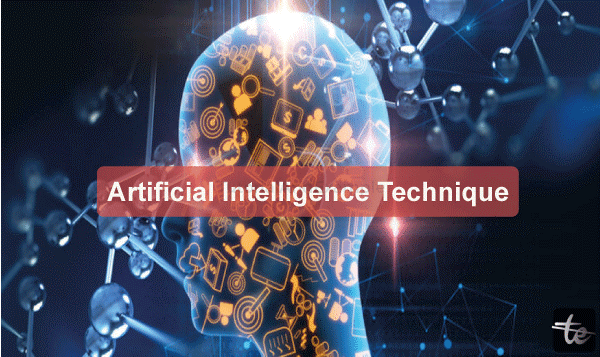
AI techniques are ways to make computers smart and capable of doing things that humans can do. Some of these techniques include teaching computers to learn from data, understand language, see and recognize objects, solve complex problems, and make decisions. Each technique has its own special way of making computers smarter and helping them improve over time. These techniques are always getting better and are used in many different areas to make computers more intelligent and useful.
How useful are Artificial Intelligence Techniques?
Artificial intelligence techniques are highly useful and impactful in a wide range of fields and applications. Here are some reasons why AI techniques are valuable:
- Automation
- Data analysis and insights
- Personalization
- Predictive analytics
- Natural language understanding
- Image and speech recognition
- Fraud detection
- Virtual assistants and chatbots
- Autonomous vehicles
- Medical diagnosis and treatment
- Recommendation systems
- Smart home technology
- Cybersecurity
- Robotics
- Financial forecasting
- Energy optimization
- Quality control in manufacturing
- Language Translation
- Content generation
- Gaming and simulations
The list of artificial intelligence techniques
There isn't a fixed number of artificial intelligence techniques, as the field of AI is broad and constantly evolving. However, let us see some popular and commonly known techniques and methodologies in AI:
- Machine Learning
- Deep Learning
- Natural Language Processing
- Artificial Neural Networks
- Computer Vision
- Genetic Algorithms
- Decision Making
- Pattern Recognition
- Random Forest
- Expert Systems
- Fuzzy Logic
- Reinforcement Learning
- Bayesian Networks
- Swarm Intelligence
- Data Mining
- Knowledge Representation and Reasoning
- Planning and Scheduling
- Cognitive Architectures
- Neural-Symbolic Integration
- Transfer Learning and Multi-task Learning
- Ensemble Methods
- Augmented Intelligence
- Explainable AI
- Meta-Learning and AutoML
- Hybrid Systems
It should be noted that this is not an entire list, as new approaches are constantly being created and studied within the AI research field. Furthermore, many AI systems use numerous strategies to efficiently address complicated issues.
Let us learn about these techniques in detail:
1.Machine Learning:
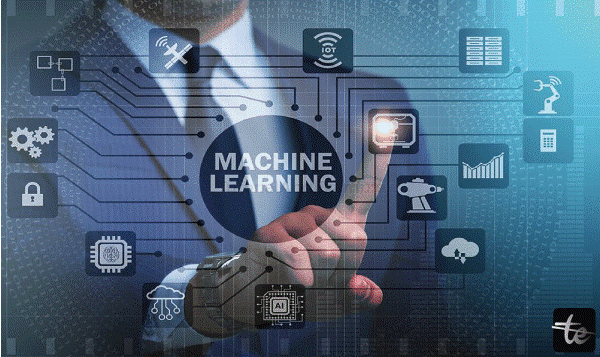
Machine learning is a useful technique in AI because it helps computers learn from data and make predictions or decisions without being directly told what to do. It is beneficial in different ways:
- Finding Patterns: Machine learning assists computers in detecting patterns and relationships in data, allowing them to better grasp complicated patterns.
2.Predicting Outcomes: Machine learning models can make educated forecasts about what will happen in the future based on prior data. For example, they can predict future sales or forecast the weather.
3.Personalization: Machine learning enables systems to personalize experiences based on user behavior, preferences, and interests, like customized recommendations on streaming platforms.
4.Automation: Machine learning automates repetitive tasks, saving time and effort. It can automate activities like data entry, quality control, and even driving in self-driving cars.
5.Problem-Solving: Machine learning assists computers in solving complicated issues by analyzing large amounts of data and determining the best answers.
6.Improving Decision-Making: By analyzing data, machine learning delivers insights that aid in making better judgments, such as detecting fraud or anomalous behavior.
7.Enhancing Efficiency: Machine learning makes processes more efficient by finding patterns and making data-driven improvements, optimizing resource allocation.
8.Advancing Technology: Machine learning is critical for technology developments such as speech recognition, picture identification, and interpreting human language.
So, machine learning assists computers in learning from data, generating predictions, automating processes, and solving issues, making them more intelligent and capable of supporting humanity in a variety of disciplines.
2.Deep Learning:
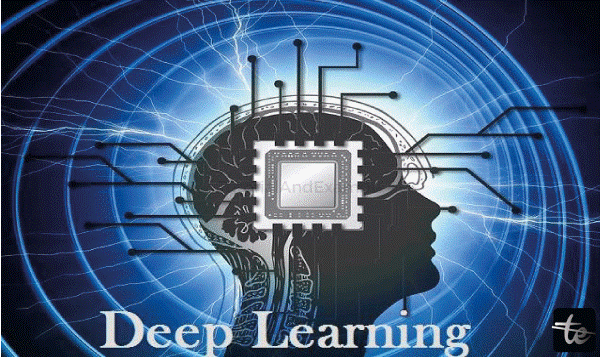
Deep learning is a robust artificial intelligence technology that replicates how the human brain processes information. It is beneficial in numerous ways:
- Image and Object Recognition: Deep learning allows computers to analyze images and accurately recognize objects or faces. This is helpful in tasks like self-driving cars identifying pedestrians or social media platforms automatically tagging people in photos.
- Natural Language Understanding: Deep learning helps computers understand and work with human language. It allows virtual assistants like Siri or Alexa to understand spoken instructions, chatbots to have conversations, and translation services to convert text between different languages.
3.Speech Recognition: Deep learning makes accurate speech recognition possible. It allows devices to convert spoken words into written text, enabling voice assistants, transcription services, and voice-controlled systems.
4.Recommendation Systems: Deep learning models can analyze user preferences and behaviors to provide personalized recommendations. This enhances the user experience on platforms like streaming services, e-commerce websites, or social media platforms.
5.Autonomous Systems: Deep learning is crucial in developing autonomous systems, such as self-driving cars or drones. It helps these systems perceive and understand their environment, make decisions, and navigate safely.
6.Medical Diagnostics: Deep learning is applied in medical imaging to detect abnormalities in X-rays, MRIs, or CT scans. It assists doctors in diagnosing diseases, identifying tumors, or analyzing medical images.
7.Natural Language Generation: Deep learning models can generate human-like text, which has applications in chatbots, content creation, or writing assistance tools.
8.Gaming and Robotics: Deep learning is utilized in gaming to create intelligent and realistic virtual characters. It's also utilized in robotics to help robots detect and interact with their environment.
Deep learning enables computers to recognize photos, interpret human language, offer personalized suggestions, aid in medical diagnosis, power autonomous systems, produce text, enhance gaming experiences, and allow robots to engage with the outside world.
3.Natural Language Processing:
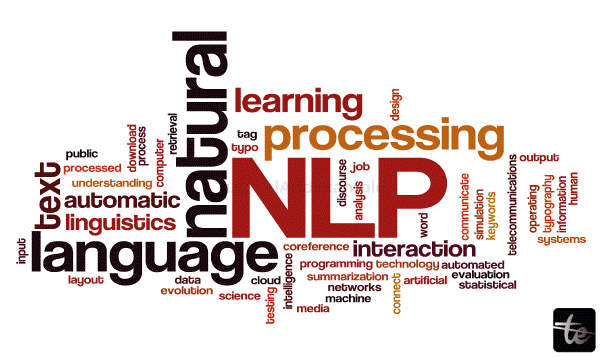
Natural Language Processing (NLP) is a useful technique in artificial intelligence because it allows computers to understand and work with human language. Here's why it is valuable in simpler words:
- Communication: NLP assists computers in understanding and responding to human language, allowing virtual assistants such as Siri or chatbots to converse and assist people.
2.Language Translation: NLP enables computers to translate text from one language to another, allowing humans to converse and understand each other more easily.
3.Information Extraction: NLP helps extract relevant information from large amounts of text, enabling computers to summarize articles, extract key facts, or analyze sentiments in customer reviews.
4.Sentiment Analysis: NLP techniques can determine the emotions and attitudes expressed in text, helping businesses understand customer opinions, feedback, and trends.
5.Text Generation: NLP can be used to generate human-like text, enabling applications like automated report writing or creative writing assistance.
6.Search and Information Retrieval: NLP techniques improve search engines by understanding user queries and retrieving relevant information from vast amounts of text.
In simpler terms, NLP allows computers to understand and process human language, facilitating communication, translation, information extraction, sentiment analysis, text generation, and effective search and retrieval of information. It helps computers interact with us in a more natural and meaningful way.
4.Artificial Neural Networks:
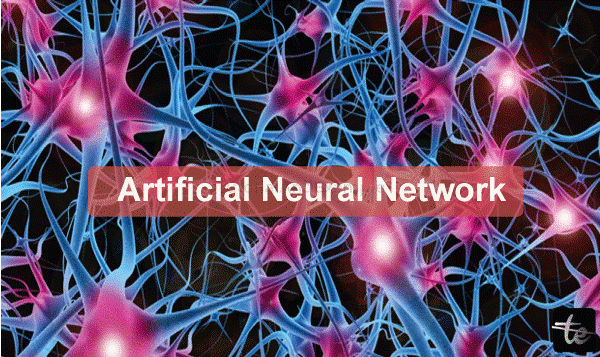
Artificial Neural Network(ANN) is a valuable artificial intelligence technique because it mimics the way our brain works, enabling computers to learn and make decisions. Here's why they are useful in simpler words:
- Pattern Recognition: Artificial Neural Networks can recognize and understand patterns in data, such as identifying specific objects in images or detecting anomalies in a dataset.
2.Predictive Modeling: ANN can learn from historical data to make predictions about future outcomes, like forecasting sales or predicting customer behavior.
3.Natural Language Processing: ANN helps computers understand and process human language, allowing applications like voice assistants or chatbots to comprehend and respond to user queries.
4.Image and Speech Recognition: ANN enables computers to recognize and interpret visual and auditory information, such as identifying objects in images or transcribing spoken words.
5.Optimization and Control: ANN can optimize processes by finding the best solutions for complex problems, optimizing resource allocation, or controlling systems in real-time.
6.Decision-Making: ANN may help humans make educated decisions by analyzing data and giving insights or recommendations.
In general terms, Artificial Neural Networks allow computers to see patterns, anticipate outcomes, understand human language, recognize pictures and sounds, optimize processes, and make decisions. They function similarly to computer brains in that they learn from data, allowing computers to do tasks that need intelligence.
5.Computer Vision:

Computer Vision is a valuable artificial intelligence technique that enables computers to see and understand visual information, like images and videos. Here's how it is useful in simpler words:
- Object Detection: Computer Vision allows computers to detect and locate objects within images or videos, enabling applications like self-driving cars to recognize pedestrians or identifying objects in surveillance footage.
2. mage Classification: Computer Vision helps classify images into different categories, such as distinguishing between the cats and dogs in photos or identifying different types of objects.
3.Quality Inspection: Computer Vision can be used to automatically inspect and identify defects in manufacturing processes, improving quality control and reducing errors.
4.Medical Imaging: Computer Vision methods enable clinicians in diagnosing illnesses, recognizing tumors, and detecting anomalies in X-rays or CT scans by analyzing medical pictures.
6. Genetic Algorithms:
Genetic Algorithms are a useful artificial intelligence technique that imitates the process of natural selection and evolution to solve complex problems. Here's how they are useful in simpler words:
- Optimization: Genetic Algorithms help find best solution to a problem by generating and evolving a population of potential solutions. It iteratively improves the solutions over time to achieve the most optimal outcome.
- Search and Exploration: Genetic Algorithms can efficiently search through a large search space to find good solutions, even in complex and vast problem domains.
- Handling Complexity: Genetic Algorithms are effective in handling complex problems with many variables or parameters that traditional algorithms may struggle with.
- Adaptability: Genetic Algorithms can adapt and evolve solutions based on changing circumstances or new requirements, making them flexible and robust in dynamic environments.
- Multi-objective Optimization: Genetic Algorithms can optimize multiple conflicting objectives simultaneously, helping in decision-making scenarios where there are trade-offs between different goals.
- Machine Learning: Genetic Algorithms can be used as a technique within machine learning to optimize parameters or architectures of models, enhancing their performance.
In simpler terms, Genetic Algorithms are like an intelligent problem-solving approach that learns and evolves over time. They search for the best solutions, handle complex problems, adapt to changes, optimize multiple objectives, and aid in machine learning tasks. They are a powerful tool to find optimal solutions in various domains where traditional algorithms may struggle.
7. Decision Making:
Decision Making as an artificial intelligence technique involves using algorithms and models to make informed choices or decisions based on available data and predefined rules. Here's how it is useful in simpler words:
- Data-driven Decision Making: Artificial intelligence algorithms may analyze enormous volumes of data and derive useful insights to enhance decision-making processes. This enables humans or automated systems to make evidence-based decisions rather than depending simply on intuition or guessing.
- Optimal Decision Making: By considering various factors and evaluating different options, artificial intelligence can identify the most optimal decision or course of action. It can weigh multiple variables, constraints, and objectives to find the best solution.
- Faster and Efficient Decisions: Artificial intelligence techniques can process and analyze data much faster than humans, enabling quicker decision-making in time-sensitive situations. It can handle large volumes of information and provide recommendations or predictions promptly.
- Consistency and Bias Reduction: Artificial intelligence techniques can reduce the influence of human biases or inconsistencies in decision-making. They can apply predefined rules or algorithms consistently, leading to fairer and more objective decisions.
- Complex Decision-Making: Artificial intelligence techniques can handle complex decision-making scenarios involving numerous variables, dependencies, and trade-offs. They can consider multiple factors simultaneously and generate insights that may not be obvious to humans.
- Decision Support Systems: Artificial intelligence can be integrated into decision support systems that provide recommendations, predictions, or simulations to assist human decision-makers. These systems augment human capabilities and enhance the decision-making process.
In simpler terms, Decision Making using artificial intelligence helps make better choices based on data, find the optimal solution, make decisions faster, reduce biases, handle complex scenarios, and provide decision support. It improves the quality and efficiency of decision-making processes, aiding humans or automated systems in making informed and effective decisions.
8. Pattern Recognition:
Pattern Recognition as an artificial intelligence technique involves the identification and analysis of patterns within data. Here's how it is useful in simpler words:
- Identifying Similarities: Pattern recognition helps computers identify similarities or commonalities in data, such as recognizing similar images or detecting recurring patterns in time series data.
- Classification and Categorization: Pattern recognition enables computers to classify or categorize data into different groups or classes based on shared characteristics. For example, it can classify emails as spam or non-spam based on patterns in the content.
- Anomaly Detection: Pattern recognition techniques can detect unusual or anomalous patterns in data, helping identify outliers, fraud, or abnormalities that deviate from expected behavior.
- Prediction and Forecasting: By recognizing patterns in historical data, pattern recognition can make predictions or forecasts about future outcomes. This is useful in areas like stock market prediction or weather forecasting.
- Data Compression: Pattern recognition techniques can identify and exploit repetitive patterns in data, leading to efficient data compression algorithms that reduce storage requirements.
- Speech and Handwriting Recognition: Pattern recognition enables computers to recognize and interpret speech or handwriting patterns, allowing applications like speech-to-text conversion or handwriting recognition.
In simpler terms, Pattern Recognition helps computers identify similarities, classify data, detect anomalies, make predictions, compress data efficiently, and recognize speech or handwriting patterns. It allows computers to make sense of complex information and extract meaningful insights from data, enabling a wide range of applications in various fields.
9.Random Forest:
Random Forest is a useful artificial intelligence technique that leverages the power of decision trees to make accurate predictions and classifications. Here's how it is useful in simpler words:
- Robust Predictions: Random Forest combines the predictions of multiple decision trees to make more accurate and reliable predictions. It reduces the impact of individual tree biases and errors, leading to robust predictions.
- Handling Complex Data: Random Forest can handle complex and high-dimensional data with ease. It can effectively handle a large number of input variables and still provide accurate predictions.
- Feature Importance: Random Forest can determine the importance of input features, identifying which variables have the most significant impact on the predictions. This helps in understanding the underlying patterns and driving factors in the data.
- Missing Data Handling: Random Forest can handle missing data by making use of available features. It can still provide reliable predictions even if some data points have missing values.
- Outlier Detection: Random Forest can detect outliers by identifying data points that deviate significantly from the expected patterns. This is useful in anomaly detection or data cleaning tasks.
- Versatility: Random Forest can be used for both classification and regression problems. It can predict discrete class labels or continuous numerical values, making it versatile across different types of data.
In simpler terms, Random Forest combines the predictions of many decision trees to make accurate predictions, handle complex data, determine important features, handle missing data, detect outliers, and work well for both classification and regression tasks. It is a powerful technique for making reliable predictions and gaining insights from data in various domains.
10. Expert Systems:
Expert System is a useful artificial intelligence technique that emulates the knowledge and reasoning of human experts in a specific domain. Here's how it is useful in simpler words:
- Knowledge and Expertise: Expert Systems collect and reflect the knowledge and experience of human specialists in a particular topic or domain. This information can be utilized to solve complicated issues or to offer advice and recommendations.
- Decision Support: Expert Systems can assist humans in decision-making processes by providing suggestions, evaluations, or recommendations based on the captured expertise. They can analyze data, consider rules, and offer insights to aid in making informed decisions.
- Consistency and Accuracy: Expert Systems ensure consistency in applying expert knowledge by following predefined rules or guidelines. They can provide accurate and reliable information consistently, reducing human errors or biases.
- Learning and Adaptation: Expert Systems can learn and improve over time by incorporating new knowledge and experiences. They can update their knowledge base, refine their rules, and adapt to changing conditions or new scenarios.
- Training and Education: Expert Systems can be used as educational tools to train or teach individuals in a specific domain. They can simulate interactions with experts, provide explanations, and facilitate learning.
- Problem Solving: Expert Systems can solve complex problems by applying their domain-specific knowledge. They can analyze data, identify patterns, and provide solutions or recommendations based on their expertise.
In simpler terms, Expert Systems capture the knowledge and reasoning of human experts in a specific field. They assist in decision-making, provide accurate information consistently, learn and adapt, support training and education, and help solve complex problems. They act as virtual experts, providing valuable insights and guidance in their respective domains.
11. Data Mining:
Data Mining is a useful artificial intelligence technique that involves discovering patterns, relationships, and insights from large datasets. It uses various statistical and machine learning algorithms to extract valuable information and knowledge from data.
To put it simply, data mining enables computers to find patterns or trends in data that may go undetected by people. It entails the analysis of enormous amounts of data to find relevant and practical patterns that may be applied to prediction or decision-making.
Data Mining has several practical applications, including:
- Business intelligence: Data mining enables companies to understand consumer behavior, market trends, and sales data patterns. Making informed company decisions, enhancing marketing tactics, and streamlining processes are all possible with the help of this information.
- Fraud Detection: Data mining techniques may be used to uncover patterns of fraudulent activity in financial transactions, insurance claims, or internet transactions. Anomalies and suspicious patterns can be recognized in huge datasets, assisting in the prevention of fraud.
- Healthcare: Data mining plays an important role in healthcare by analyzing patient records, medical pictures, and clinical data. It can help discover illness patterns, predict medical outcomes, and improve patient care and treatment choices.
12. Bayesian Networks
Bayesian Networks are effective artificial intelligence techniques because they enable us to describe and reason about uncertain data in an organized and natural manner.
In other words, Bayesian Networks assist us in making judgments and drawing conclusions when we do not have complete knowledge. They are founded on the mathematical framework known as probability theory.
The following is how Bayesian Networks work:
- Representation: Bayesian Networks represent knowledge or relationships between variables using a graphical model. The variables are represented as nodes, and the relationships between them are shown as directed edges.
- Uncertainty: Bayesian Networks can handle uncertain information by assigning probabilities to different states of each variable. These probabilities represent our degree of belief or uncertainty about the variable's state.
13. Swarm Intelligence
Swarm Intelligence operates as follows:
Swarm Intelligence is inspired by the behavior of social insects, in which individuals work together as a collective entity to pursue common goals. Similarly, in Swarm Intelligence, a swarm of agents collaborates and interacts with one another.
- Self-Organization: Swarm Intelligence emphasizes decentralized control, meaning that each agent in the swarm follows simple rules based on local information and interactions with nearby agents. There is no central authority or leader dictating actions to the agents. Instead, the swarm collectively self-organizes to achieve a global objective.
- Emergent Properties: Through local interactions and simple rules, complex global behavior emerges from the collective actions of the individual agents. The swarm exhibits properties such as adaptation, robustness, and scalability, enabling it to solve complex problems and adapt to dynamic environments.
- Problem Solving: Swarm Intelligence can be applied to various problem-solving tasks. For example, it can be used to optimize routes in transportation systems, find optimal solutions in resource allocation problems, perform search and exploration tasks, and even simulate social behavior in virtual environments.
- Flexibility and Resilience: Swarm Intelligence is inherently flexible and resilient. If individual agents fail or new agents join the swarm, the system can adapt and continue functioning without significant disruption. This robustness makes Swarm Intelligence suitable for dynamic and unpredictable environments.
Overall, Swarm Intelligence offers a powerful approach for solving complex problems by harnessing the collective intelligence and collaboration of multiple agents. It provides a decentralized and adaptive framework that can tackle challenges that are beyond the capabilities of individual agents or traditional problem-solving methods.
14. Planning and Scheduling
Planning and Scheduling is a valuable artificial intelligence method that assists computers and systems in making intelligent judgments about how to efficiently and effectively complete activities in an efficient and effective manner.
Simply said, planning and scheduling are developing a step-by-step plan and organizing the time of tasks to achieve goals in the most efficient manner.
The following is how Planning and Scheduling work:
- Goal-Oriented: Planning and scheduling are concerned with reaching specified goals or objectives. It entails breaking a major goal down into smaller, doable activities and establishing the optimal sequence and time for completing these tasks.
- Resource Optimization: It considers a variety of limitations and restricted resources, such as time, cost, resource availability, and job dependencies. It tries to optimally distribute resources in order to minimize waste and maximize efficiency.
- Decision-Making: Planning and Scheduling involves making intelligent decisions based on available information, preferences, and constraints. It considers factors like task dependencies, resource availability, deadlines, and priorities to determine the best course of action.
- Flexibility and Adaptability: Planning and Scheduling allows for flexibility and adaptability in handling dynamic environments. It is capable of dealing with changes, uncertainties, and unforeseen occurrences by re-evaluating plans, changing timetables, and making appropriate changes to meet new information or restrictions.
Planning and scheduling approaches are used in a variety of disciplines and enterprises. It can be used in logistics and supply chain management, for example, to plan efficient delivery routes and schedules, in manufacturing to optimize production processes, in project management to allocate resources and schedule activities, and in robotics to plan action sequences for autonomous systems.
To summarize, Planning and Scheduling is an artificial intelligence method that allows computers and systems to construct effective plans, allocate resources, and schedule operations to meet desired goals. It helps optimize efficiency, handle complexities, and make intelligent decisions, ultimately enhancing productivity and performance in various domains.
15. Neural-Symbolic Integration:
Neural-Symbolic Integration is a useful artificial intelligence technique that combines the strengths of both neural networks and symbolic reasoning approaches. In simpler words, it brings together the ability of neural networks to learn from data and the reasoning capabilities of symbolic AI systems.
Here's how Neural-Symbolic Integration is useful:
- Combining Learning and Reasoning: Neural-Symbolic Integration allows for the integration of neural networks and symbolic reasoning techniques. Neural networks excel at learning from large amounts of data to recognize patterns and make predictions. In contrast, symbolic reasoning excels in representing and manipulating organized knowledge in order to execute logical reasoning tasks. Combining the benefits of these two tactics, AI systems may increase their overall efficiency by incorporating the benefits of these two strategies.
In contrast, symbolic reasoning is more transparent and allows for explicit rule-based explanations. Neural-Symbolic Integration enables the creation of hybrid models that can provide interpretable explanations while still benefiting from the high learning capacity of neural networks.
- Handling Uncertainty and Incomplete Information: Neural networks are good at handling uncertain and noisy data, but they struggle with reasoning under uncertainty or incomplete information. Symbolic reasoning techniques, on the other hand, can handle uncertainty using probabilistic or logical frameworks. Neural-Symbolic Integration allows for combining the probabilistic reasoning abilities of symbolic AI with the ability of neural networks to handle large-scale data and uncertainty.
- Improving Generalization and Robustness: Neural networks are powerful in generalizing from examples and learning patterns, but they can be sensitive to slight changes in input. Symbolic reasoning can provide robustness and stability to AI systems by imposing logical constraints and using background knowledge. Neural-Symbolic Integration allows for incorporating symbolic reasoning into neural networks, making them more robust, interpretable, and capable of reasoning beyond the training data.
- Knowledge Representation and Transfer: Symbolic reasoning techniques excel at representing and manipulating knowledge in a structured and symbolic form. This knowledge can be leveraged to guide the learning process of neural networks, provide prior knowledge for faster learning, and transfer knowledge between different domains or tasks. Neural-Symbolic Integration enables the integration of symbolic knowledge representations with neural networks, facilitating more efficient learning and reasoning.
To summarize, Neural-Symbolic Integration in artificial intelligence combines the benefits of neural networks and symbolic thinking to improve AI systems' learning, reasoning, interpretability, and resilience.
16. Meta-Learning and AutoML:
Meta-Learning and AutoML are useful artificial intelligence techniques that focus on automating the process of machine learning itself. In simpler words, they help AI systems learn how to learn or optimize the process of creating machine learning models.
Here's how Meta-Learning and AutoML are useful:
- Automating Machine Learning: Typical machine learning procedures include data preparation, feature selection, model selection, hyperparameter tweaking, and model assessment. These phases are automated using Meta-Learning and AutoML approaches, which provide algorithms that can automatically search for the optimum combinations of preprocessing techniques, feature representations, models, and hyperparameters. This automation saves data scientists time and effort, allowing them to focus on higher-level tasks.
- Improving Model Performance: Meta-Learning and AutoML approaches try to increase machine learning model performance. They accomplish this by picking the optimal algorithms, architectures, or hyperparameters based on previous performance and information learned from previous jobs or datasets. AI systems may make more informed judgements and construct models that perform better in certain domains or tasks by exploiting this knowledge.
- Transfer Learning and Knowledge Sharing: Meta-Learning and AutoML techniques enable the transfer of knowledge and learning from one task or domain to another. They can use the knowledge gathered from prior learning experiences to accelerate learning in new tasks. This information transfer enables AI systems to generalize more effectively, adapt to new conditions more rapidly, and perform well with minimal data.
- Adaptive and Self-Improving AI Systems: Meta-Learning and AutoML approaches make it easier to build adaptive and self-improving AI systems. These systems can continually analyze and learn from their own performance, making adaptive alterations to improve future performance. They can identify when model performance deteriorates or new data comes automatically and update or retrain their models to maintain high performance.
- Democratizing Machine Learning: Meta-Learning and AutoML techniques make machine learning more accessible to a wider range of users, including those with limited expertise in data science. By automating the process and removing the need for manual intervention in every step, these techniques allow users to apply machine learning without deep knowledge of algorithms or coding. This democratization of machine learning enables non-experts to leverage AI techniques for various applications.
To summarize, Meta-Learning and AutoML approaches automate and optimize the machine learning process. They boost model performance, allow for information sharing, build adaptable systems, democratize machine learning, and expedite innovation. These strategies are critical in making machine learning more accessible, efficient, and successful for a variety of applications and consumers.
17. Hybrid Systems:
Hybrid Systems, as an artificial intelligence technique, refer to the combination or integration of multiple AI approaches or methodologies to solve complex problems. In simpler words, Hybrid Systems combine different AI techniques to leverage their respective strengths and address the limitations of individual approaches.
Here's how Hybrid Systems are useful:
- Improved Performance and precision: By combining several AI approaches, Hybrid Systems can solve complicated problems with greater speed and precision. Different approaches have different strengths and weaknesses, and by combining them, the system may take use of their complimentary nature to overcome limits and generate more robust outcomes.
- Enhanced Flexibility and adaptation: Hybrid Systems provide flexibility and adaptation when dealing with a wide range of issue areas. Different AI strategies are appropriate for various sorts of challenges or data. The system may adapt and switch between ways based on the features of the situation at hand by integrating methodologies. This adaptability enables the system to manage a broader range of circumstances while improving overall performance.
- Synergy and Complementary Capabilities: Hybrid Systems leverage the synergies and complementary capabilities of different AI techniques. Each strategy takes a distinct approach to issue solving and might provide new views and insights. The system can profit from the specific capabilities of these strategies by combining them to generate more complete and holistic answers.
- Domain-specific Optimization: Hybrid Systems can be tailored to specific problem domains by selecting and combining AI techniques that are most effective in those domains. This customization allows for optimized performance and specialized solutions in specific application areas. The system can utilize the most suitable techniques for each aspect of the problem, resulting in improved outcomes.
- Handling Complex and Uncertain Environments: Hybrid Systems are particularly useful in complex and uncertain environments where a single AI technique may not be sufficient. By integrating multiple techniques, the system can better handle uncertainties, noise, or incomplete information. It can combine probabilistic reasoning, symbolic reasoning, and learning-based approaches to make more informed decisions and adapt to changing conditions.
- Integration of Human and Machine Intelligence: Hybrid Systems also enable the integration of human expertise and machine intelligence. They can incorporate human insights, domain knowledge, or expert rules along with AI techniques. This combination allows for the utilization of human judgment and interpretation in the decision-making process, leading to more reliable and interpretable results.
In summary, Hybrid Systems combine multiple AI techniques to improve performance, enhance flexibility, leverage complementary capabilities, optimize solutions for specific domains, handle complex environments, and integrate human expertise. They provide a powerful and flexible framework for solving complex problems and advancing artificial intelligence capabilities in various domains and applications.
18. Fuzzy Logic:
Fuzzy Logic, as an AI method, has advantages for managing inconsistency and inaccuracy in making choices. In a nutshell, Fuzzy Logic enables AI systems to make judgments based on fuzzy or ambiguous information, similar to how people make decisions in the real world.
Here's how Fuzzy Logic is useful:
Granular and Continuous Reasoning: Fuzzy Logic enables granular and continuous reasoning, allowing for smooth transitions between different states or conditions. Unlike traditional binary logic, Fuzzy Logic provides a continuum of possibilities by assigning degrees of membership to different categories. This capability is beneficial in situations where there is gradual or overlapping boundaries between different states, enabling more nuanced decision-making and better handling of real-world complexity.
Dealing with Uncertainty: Fuzzy Logic provides a way to model and reason with uncertain or imprecise information. In many real-world scenarios, information is not always clear-cut or binary (true/false). Fuzzy Logic allows AI systems to handle this uncertainty by representing and manipulating information in a more flexible and gradual manner. It enables systems to make decisions based on degrees of truth or membership to different categories rather than strict binary values.
Linguistic Representation: Fuzzy Logic allows the use of linguistic variables and fuzzy sets to represent and interpret human language and subjective terms. It provides a mechanism to capture and utilize human-like reasoning based on linguistic terms such as "very hot," "slightly cold," or "moderately fast." This linguistic representation enables AI systems to understand and reason with human-like concepts, making them more interpretable and user-friendly.
Rule-Based Decision Making: Fuzzy Logic employs rule-based systems where decisions are made based on a set of if-then rules. These rules express relationships between inputs and outputs using fuzzy linguistic terms. By utilizing fuzzy rules, AI systems can handle complex decision-making processes and imprecise inputs. Fuzzy Logic allows for flexible rule interpretations and smooth transitions between rules, providing a more robust decision-making framework.
Handling Complex Systems: Fuzzy Logic is particularly useful in modeling and controlling complex systems where precise mathematical models may not be available or feasible. It allows AI systems to capture and work with the inherent uncertainties and complexities of real-world systems. Fuzzy Logic-based controllers, for example, can adaptively control systems with multiple inputs, complex dynamics, and nonlinear relationships, providing effective solutions in domains such as robotics, automation, and process control.